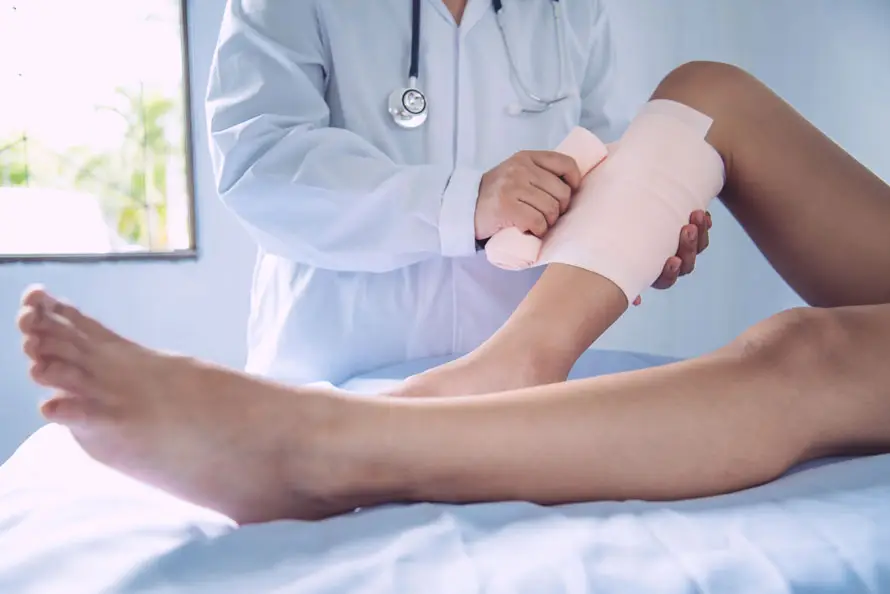Understanding Common Orthopedic Conditions: Causes, Symptoms, and Treatment Options

Orthopedic conditions can drastically affect your mobility, independence, and quality of life. Whether caused by injury, age, or chronic wear and tear, these conditions are more common than many people realize. In this article, we’ll explore what orthopedic conditions are, what causes them, how to recognize symptoms early, and the best treatment options available today.
What Are Orthopedic Conditions?
Orthopedic conditions refer to injuries and diseases that affect the musculoskeletal system, including bones, joints, ligaments, tendons, and muscles. These disorders can result from trauma, repetitive strain, genetic conditions, or age-related degeneration.
Orthopedic care is essential in diagnosing, managing, and treating issues that affect physical function and mobility.
Top 5 Common Orthopedic Conditions
1. Osteoarthritis
- Cause: Wear and tear on joints over time.
- Symptoms: Joint pain, stiffness, swelling, and reduced range of motion.
- Common Sites: Knees, hips, hands, and spine.
2. Rheumatoid Arthritis
- Cause: Autoimmune disorder where the immune system attacks joint tissues.
- Symptoms: Chronic pain, joint inflammation, fatigue, and deformities.
- Common Sites: Fingers, wrists, elbows, and knees.
3. Osteoporosis
- Cause: Weakening of bones due to loss of bone density.
- Symptoms: Bone fractures (often with minimal trauma), back pain, loss of height.
- Common Sites: Spine, hips, and wrists.
4. Herniated Disc
- Cause: Damage to the intervertebral disc, often due to lifting or strain.
- Symptoms: Back or neck pain, tingling, numbness, or weakness in limbs.
- Common Sites: Lower back and cervical spine.
5. Bone Fractures
- Cause: Trauma, falls, accidents, or weakened bones.
- Symptoms: Sharp pain, swelling, bruising, and inability to use the affected limb.
- Types: Simple, compound, stress fractures, and compression fractures.
Causes and Risk Factors
Understanding the causes helps with early prevention. Common risk factors include:
- Age: Increased wear and tear or degeneration over time.
- Genetics: Family history of conditions like arthritis or scoliosis.
- Lifestyle: Sedentary habits, poor posture, and obesity.
- Occupation: Jobs involving repetitive motion or heavy lifting.
- Injuries: Past sports or accident-related trauma.
Recognizing Early Symptoms
Early diagnosis is key to successful treatment. Watch for these signs:
- Persistent joint or muscle pain
- Swelling or inflammation
- Limited movement or stiffness
- Grinding sensations in joints
- Numbness or tingling in limbs
- Visible deformities or instability
Diagnostic Methods
To confirm a diagnosis, orthopedic specialists use:
- Physical Exams: To assess movement, strength, and reflexes.
- X-rays: To detect bone fractures or joint degeneration.
- MRI & CT Scans: For detailed views of soft tissues like discs and ligaments.
- Bone Density Tests: To evaluate osteoporosis risk.
- Blood Tests: To detect autoimmune conditions like rheumatoid arthritis.
Non-Surgical Treatment Options
Many orthopedic issues can be managed without surgery, including:
- Physical Therapy: Strengthens muscles, restores movement, and prevents further injury.
- Medications: NSAIDs for pain and inflammation, corticosteroids, or DMARDs for autoimmune diseases.
- Injections: Cortisone shots or hyaluronic acid for joint pain relief.
- Bracing and Supports: Reduce strain and protect vulnerable areas.
When Surgery Is Needed
Surgery is usually considered when non-invasive treatments fail or the condition worsens. Common orthopedic surgeries include:
- Joint Replacement (Knee, Hip, Shoulder)
- Spinal Surgery (Discectomy, Fusion)
- Arthroscopy (Minimally Invasive Joint Repair)
- Fracture Fixation (Using Rods, Plates, Screws)
Recovery time varies depending on the procedure, but physical therapy is typically essential to regain strength and function.
Prevention Tips for Orthopedic Health
- Maintain a healthy weight to reduce joint stress
- Exercise regularly to keep muscles strong and joints flexible
- Eat a diet rich in calcium and vitamin D
- Practice good posture and body mechanics
- Avoid smoking and excessive alcohol, which weaken bones
- Address injuries early before they worsen
FAQs About Orthopedic Conditions
1. What is the difference between osteoarthritis and rheumatoid arthritis?
Osteoarthritis is due to wear and tear, while rheumatoid arthritis is an autoimmune condition.
2. When should I see an orthopedic doctor?
If pain, swelling, or stiffness lasts more than a few days or worsens over time, see a specialist.
3. Can orthopedic conditions be cured completely?
Some conditions can be resolved, while others are managed long-term with therapy and lifestyle changes.
4. How long does it take to recover from orthopedic surgery?
Recovery depends on the procedure—anywhere from weeks to several months.
5. Are orthopedic issues only common in older adults?
No, they can affect anyone, especially athletes and people with injuries or genetic predisposition.
6. What role does diet play in orthopedic health?
A nutrient-rich diet helps maintain bone density and muscle strength, reducing injury risk.
7. Is physical therapy necessary after orthopedic treatment?
Yes, it often accelerates recovery, restores movement, and prevents complications.
8. Can orthopedic conditions return after treatment?
Yes, if underlying issues persist or preventive care isn’t followed, recurrence is possible.
Conclusion
Orthopedic conditions can be painful and limiting, but with the right knowledge and care, they are often manageable and even preventable. Early diagnosis, lifestyle changes, and appropriate treatment can restore mobility and improve overall well-being. Whether you’re dealing with arthritis, a back injury, or osteoporosis, staying informed and proactive is the best step toward lasting orthopedic health.
